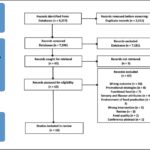E. coli, or Escherichia coli, is a bacteria that can cause illness in humans. Understanding how it spreads and what food is E. coli found in is crucial for preventing infection. This article provides information on E. coli, its sources, and how to avoid contamination.
How E. Coli Spreads
E. coli spreads primarily through contact with:
- Infected individuals
- Infected animals
- Contaminated surfaces, foods, or liquids
Exposure to E. coli can occur through various means, particularly through the consumption of contaminated food and water.
Common Food Sources of E. Coli
So, what food is E. coli found in most often? Here are some of the most common sources of E. coli contamination in food:
-
Raw or Undercooked Beef: Ground beef is particularly susceptible because the grinding process can spread bacteria throughout the meat.
E. coli often contaminates raw ground beef due to processing methods.
-
Unpasteurized Milk Products: Raw milk and cheeses made from raw milk can harbor E. coli.
-
Contaminated Raw Fruits and Vegetables: Leafy greens like spinach and lettuce, as well as sprouts, are often contaminated due to contact with contaminated water or manure.
Water Contamination and E. Coli
Besides food, water can also be a source of E. coli. Here’s how:
-
Untreated Water: Drinking water from sources that haven’t been properly treated can expose you to E. coli.
-
Unpasteurized Juices and Milk: Similar to raw milk products, unpasteurized juices can also contain the bacteria.
Unpasteurized milk can be a carrier of harmful bacteria, including E. coli.
Other Ways E. Coli Spreads
In addition to food and water, E. coli can spread through:
- Mishandling or Undercooking Food: Improper handling and insufficient cooking of contaminated food can lead to infection.
- Contact with Feces: Coming into contact with the feces of infected animals or people can transmit the bacteria.
It’s important to remember that both animals and people can be carriers of E. coli, meaning they can be infected and spread the bacteria without showing symptoms. Adults can be infectious for up to a week, while children may remain infectious for as long as three weeks.
Where E. Coli Originates
E. coli bacteria naturally live in the intestines of some animals, particularly:
- Cattle
- Goats
- Sheep
These animals can carry E. coli in their feces, which can then contaminate the environment and food supply.
How Food and Water Become Contaminated
Understanding how contamination occurs is crucial for prevention. Here are the common pathways:
-
Water Contamination: Water sources can become contaminated when feces from infected individuals or animals enter the water supply.
-
Contamination During Meat Processing: Raw meat can become contaminated during processing if proper hygiene practices are not followed.
-
Food Handling by Infected Individuals: If a person infected with E. coli handles food, they can transfer the bacteria.
Proper handwashing techniques are essential to prevent the spread of E. coli.
-
Contamination of Fruits and Vegetables: Fruits and vegetables can become contaminated during growing and harvesting if they come into contact with contaminated manure or water.
-
Cross-Contamination: Improper handling of raw food can lead to cross-contamination, spreading E. coli to other foods.
Protecting Yourself from E. Coli
To protect yourself from E. coli, it is essential to practice good hygiene, handle food safely, and ensure that food is properly cooked. Wash your hands frequently, especially before preparing food, cook meat thoroughly, and avoid consuming unpasteurized products. By understanding what food is E. coli found in and how it spreads, you can take steps to minimize your risk of infection.
